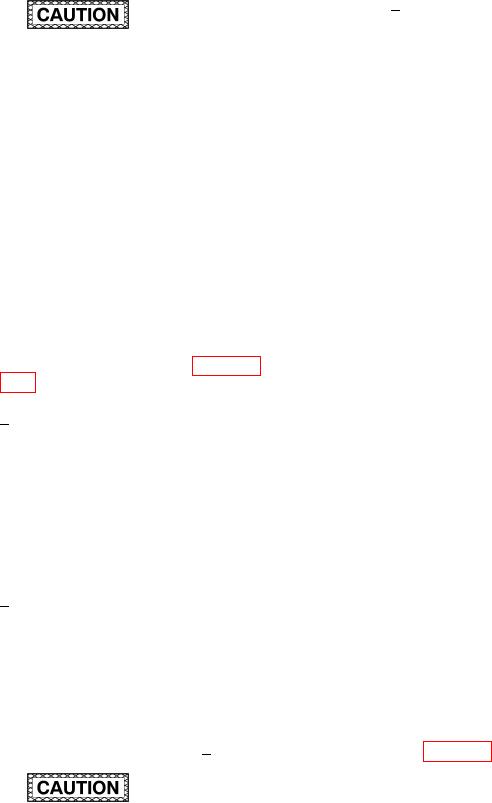
TM 1-1500-204-23-11
Locate the embedded piece of
3
vacuum bagging ilm by gently sep-
arating the plies of the patch at
one location (for a square patch,
Failure to observe the correct number of repair
perform this operation in one cor-
plies, the correct repair ply orientation, the
ner). Carefully separate the plies
correct repair ply overlap and removal of all
and remove the embedded vac-
pieces of vacuum bagging ilm will reduce the
uum bagging ilm without distorting
strength of the repair and may result in the
or wrinkling the pieces of the patch.
loss of structural integrity.
Replace the removed portion of
the patch in its proper orientation
(e) Verify the layup sequence by stacking
and smooth out the surface of the
the patch plies in numerical sequence
patch.
prior to layup.
(g) Place the wet layup laminate on the
NOTE
porous release ilm.
Ensure the vacuum bagging ilm is removed
(h) Place the other layer of porous release
from both sides of each ply during the layup
ilm over the laminate taking care to
process. Save all removed pieces of vacuum
align the edges of the porous release
bagging ilm until veriied.
ilm with the edges of the porous release
ilm on the bottom of the patch. Tape in
(f)
Layup the plies using the Flat Ply Colla-
place.
tion Technique described in paragraph
(i)
Cover stacking sequence with the
proper number of bleeder plies taking
Starting with the irst ply of the
1
care to align the edges with the porous
patch, stack the plies in the center
release ilm.
of the porous release ilm placed
on the caul sheet, while maintain-
(j)
Cut a layer of release ilm at least 0.5
ing the correct orientation for each
inch larger than the laminate. Place
ply in relationship to the orienta-
over the stacking sequence. Tape in
tion marked on the caul sheet.
place.
Ensure the vacuum bagging ilm is
removed from both sides of each
(k) Manually perforate the release ilm with
ply during the layup process.
pin holes on 4 inch centers.
Verify no vacuum bagging ilm was
2
(l)
Place and trap seal tape the perfo-
left in the patch by counting the
rated non-porous release ilm over the
number of pieces of vacuum bag-
bleeder plies.
ging ilm. There must be twice as
many pieces of vacuum bagging
(m) Place a bead of vacuum bag sealant
ilm as there are plies in the fabri-
around the perimeter of the base plate
cated patch. If all pieces of vacuum
for sealing inner bag. Ensure sealant is
bagging ilm can be accounted for,
applied at a distance of at least 2 inches
proceed to step (g); otherwise, fol-
beyond the perimeter of the rigid box.
low the procedure in step 3.
See igure 3-6.
NOTE
If using the double vacuum tool, verify the
breather material covers the sharp edges of
A patch with one or more pieces of vacuum
the vacuum groove and the inner bag port
bagging ilm accidentally left in during layup
itting to prevent cutting the inner bag.
and cure is unacceptable and must be dis-
carded. A new patch must be fabricated.
(n) Cover the base plate and layup with two
Prior to separating any repair stack, the warp
plies of breather to within 1/2 inch of the
orientation of the patch must be identiied
vacuum bag sealant on the base plate.
and maintained during all operations used to
separate and join the layers of the stack.
(o) Connect heat blanket to controller.
7-108

